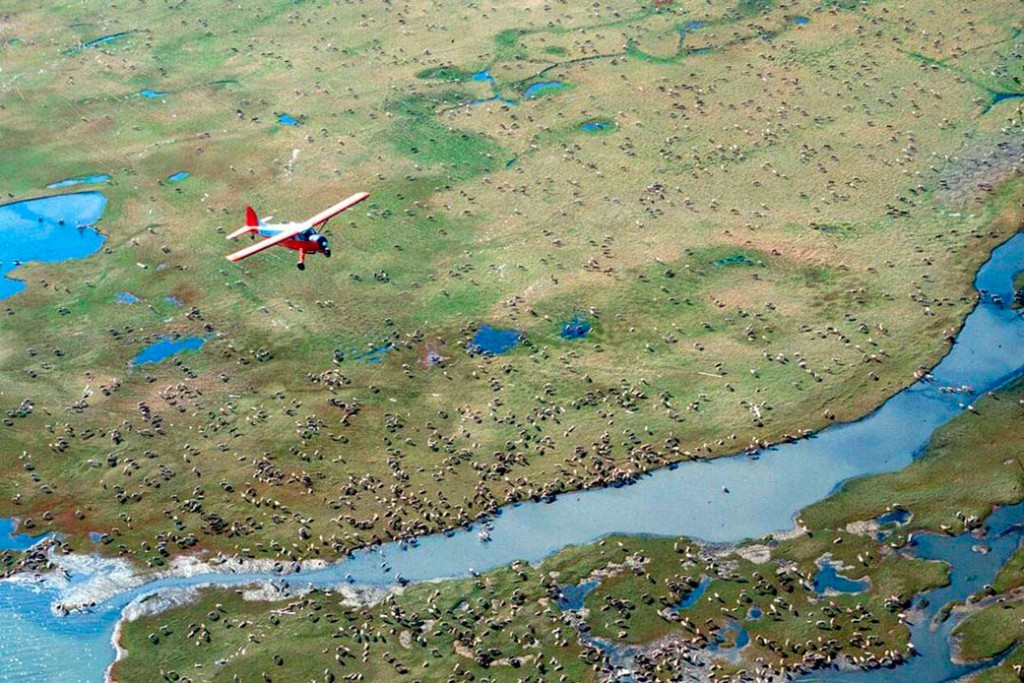A news item produced by the Center for American Progress includes the results of a new analysis by CSP that highlights the multiple ecological and wildlife values in the Arctic National Wildlife Refuge.

An airplane flies over caribou from the Porcupine caribou herd on the coastal plain of the Arctic National Wildlife Refuge in northeast Alaska.
For this report, we analyzed publicly available data to map values within the Arctic National Wildlife Refuge related to the four purposes that guide its management, namely, to: conserve fish and wildlife populations and habitats in their natural diversity; fulfill the international fish and wildlife treaty obligations of the United States; provide the opportunity for continued subsistence uses by local residents; and ensure water quality and necessary water quantity within the refuge. We found that 97% of the most crucial habitats in the Arctic Refuge are located within the area that would be opened for drilling under the proposed tax bill. For example, 33% of the Critical Habitat for denning polar bears in all of Alaska and 65% of that in the Arctic Refuge is located within the coastal plain boundary. Drilling in this region would result in the loss of critical habitat for wildlife and threaten Alaskan native subsistence uses.

